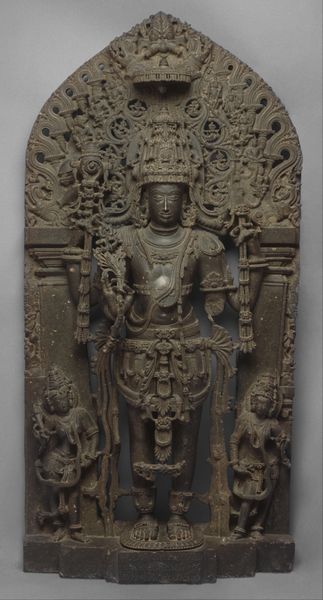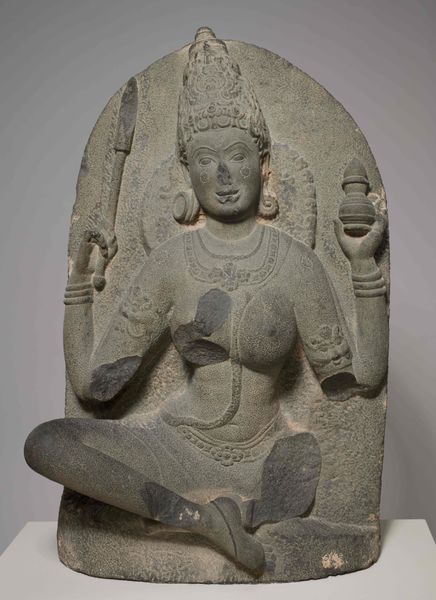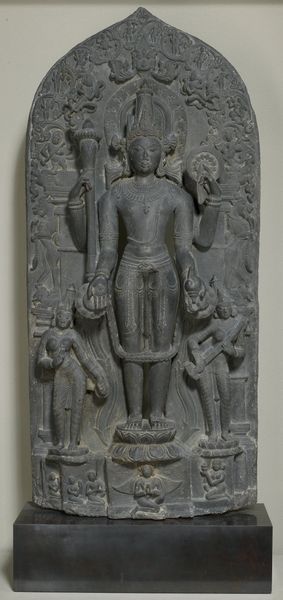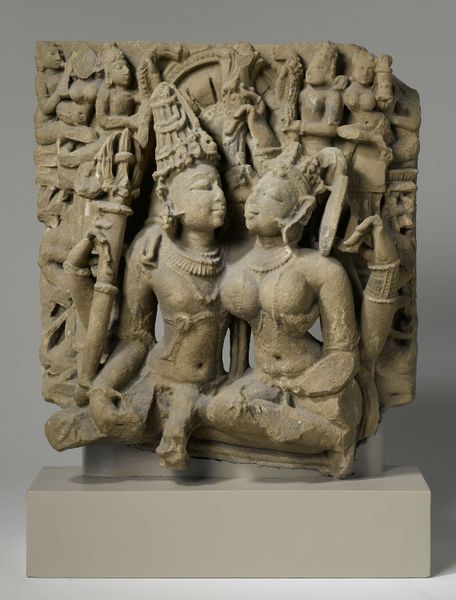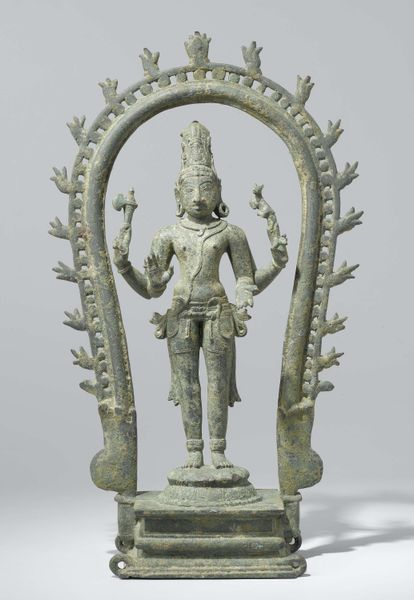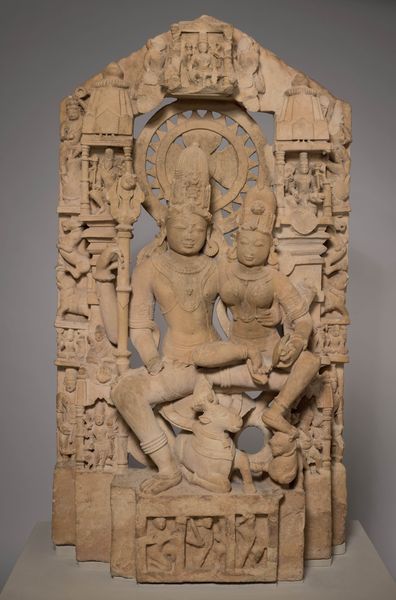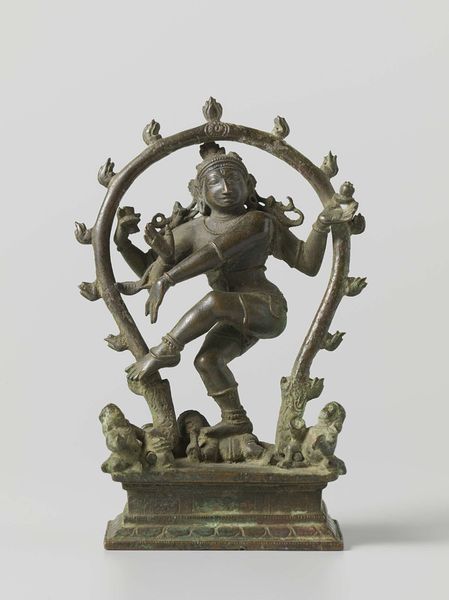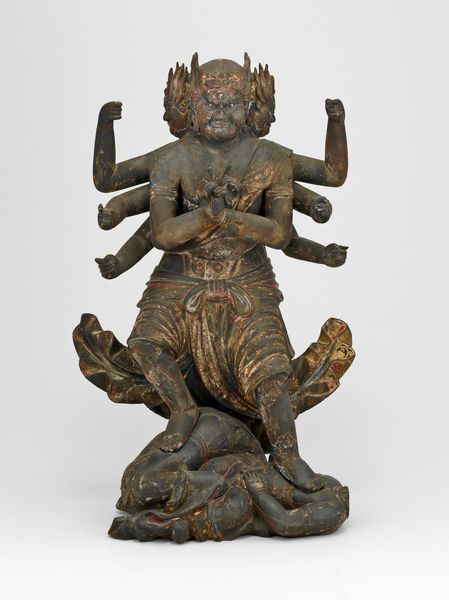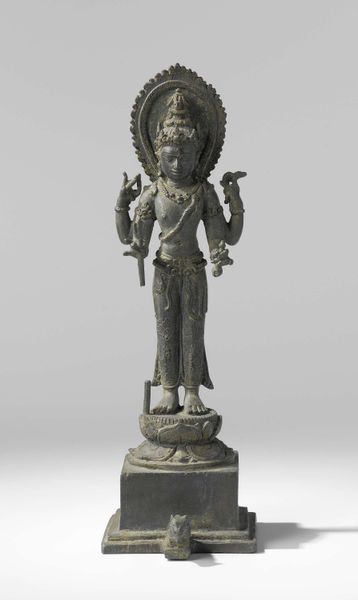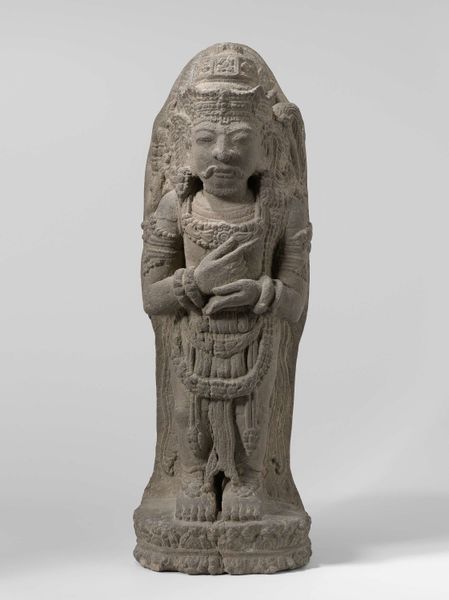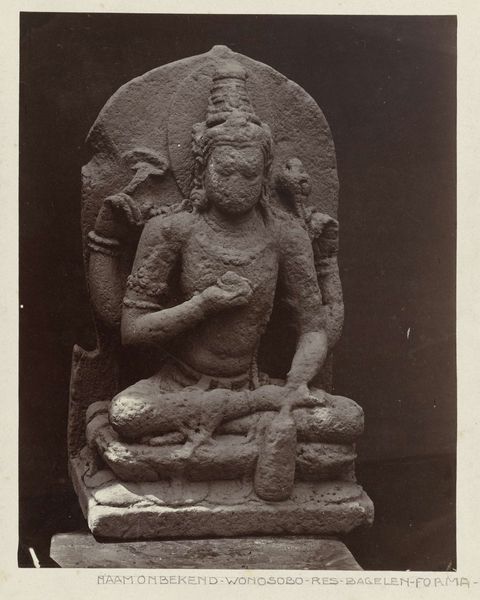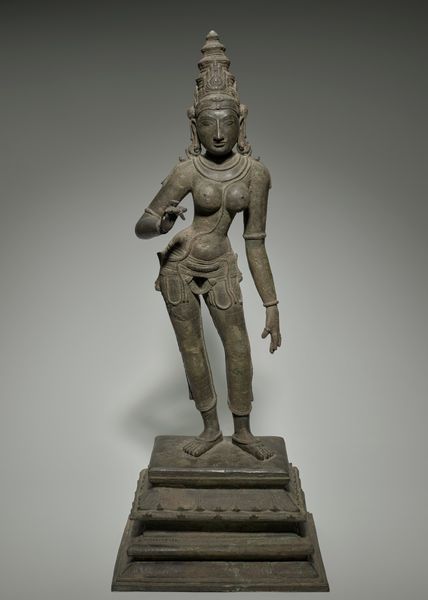
carving, sculpture
#
portrait
#
carving
#
sculpture
#
asian-art
#
figuration
#
sculpture
Dimensions: 48 1/4 x 22 1/4 x 9 1/2 in. (122.56 x 56.52 x 24.13 cm)
Copyright: Public Domain
Curator: This sculpture, created around the late 10th century, represents Shiva, a major Hindu deity, and is part of the collection at the Minneapolis Institute of Art. Editor: My first thought? It feels like a dance paused mid-motion. The way the body is tilted and the missing limbs only amplify that sensation of arrested energy, almost painfully beautiful. Curator: The figure’s missing limbs aren't merely accidental damage; they seem almost deliberately broken away, which, when you are looking at an object connected to powerful spiritual ideas, adds to an understanding of vulnerability and acceptance. In this sculpture, what is included is actually what the symbol is really communicating. Editor: The fragmented state underscores Shiva's role as the destroyer, right? To dismantle is to begin anew. It also speaks to a universal truth: everything decays. And it has deep meaning as that force—that acceptance. The multiple arms are each significant for their presence and potential actions; one is holding an item—while two of the other arms hold characters each a part of the history of Hindu understanding. Curator: Precisely! He’s not just tearing things down for the sake of chaos. The lotus is there—the blossoming, an upward direction with these serpent deities alongside. It also showcases a stunning control of proportion, despite what seems to be damage or erasure. And notice, while there are multiple limbs here and damage on other sides—that one head stares forward—as the key is singular—focusing vision here. Editor: And I see a delicate sensuality in the modeling that seems almost at odds with the force you're describing, the destructive aspect, it creates a sense of Shiva in complete harmony. And what an elegant crown or helmet Shiva dons; all the work here, it must have taken great skill and focus on such detailed imagery. The more I see it, the more deeply symbolic and poetic it appears! Curator: Indeed. Even the incompleteness whispers volumes. It’s a very grounded reminder of impermanence. Editor: Yes, it helps bring ancient wisdom closer; more visceral and emotionally palpable in our modern awareness.
Comments
minneapolisinstituteofart almost 2 years ago
⋮
Elegantly posed with jeweled festoons suspended from his belt, pendant ear ornaments, and an elaborately domed hair arrangement (jatamukata), Shiva, the Hindu god of destruction and regeneration, is shown flanked by worshipful celestial couples. Shiva’s dynamic triple-bend pose, called tribhanga, is inextricably related to the prescribed motions of body, limbs, and hand gestures of classical Indian dance. While acutely aware of human anatomy, South Asian sculptors rarely indicated musculature, concerning themselves instead with the portrayal of a flawless, divine body. A sense of the divine is masterfully achieved through intensely idealized beauty that has no mundane human references. This statue is probably from the exterior wall of a temple dedicated to Shiva.
Join the conversation
Join millions of artists and users on Artera today and experience the ultimate creative platform.

